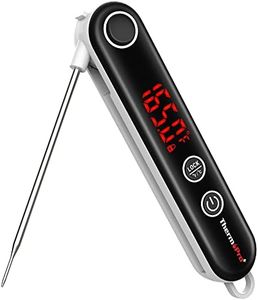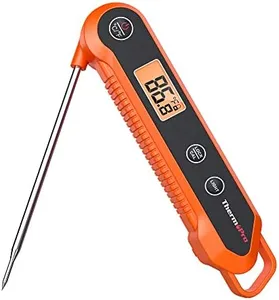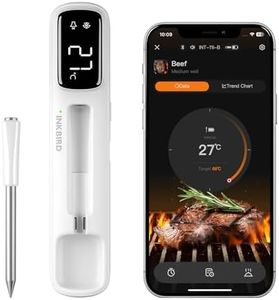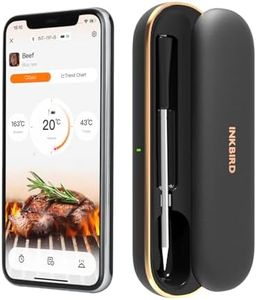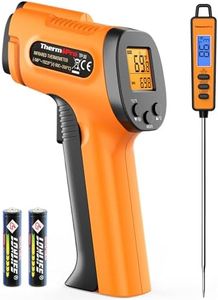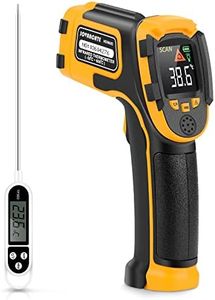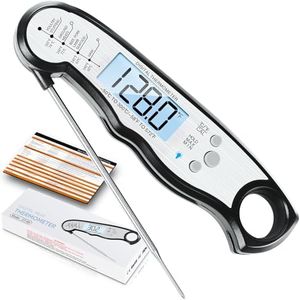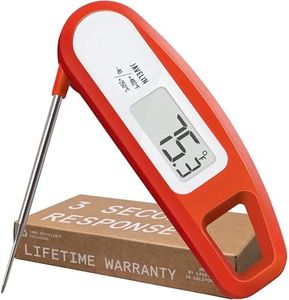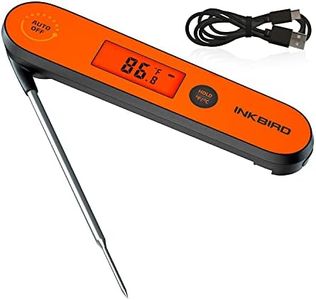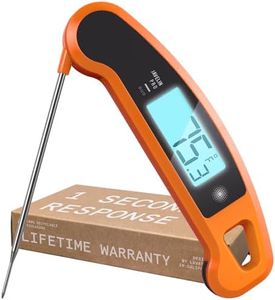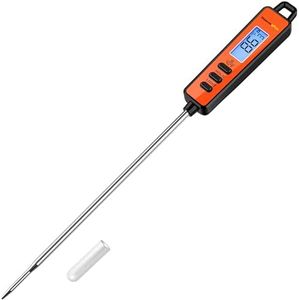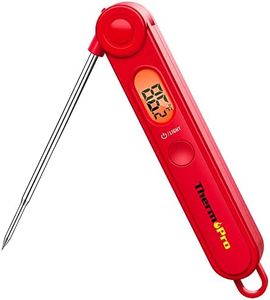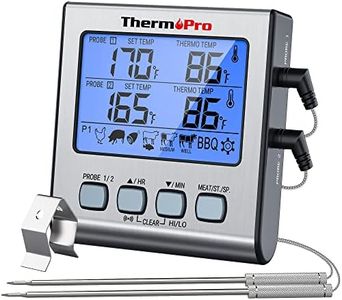We Use CookiesWe use cookies to enhance the security, performance,
functionality and for analytical and promotional activities. By continuing to browse this site you
are agreeing to our privacy policy
10 Best Food Thermometers
From leading brands and best sellers available on the web.Buying Guide for the Best Food Thermometers
Choosing a food thermometer is all about finding the right tool to help you cook food safely and to your preferred doneness. The main job of a food thermometer is to give a quick and reliable reading of the temperature inside your food, so you can be sure it's cooked properly. When looking for a food thermometer, you should think about how you'll use it most: grilling, baking, roasting, or making candy, for example. Consider which features make the thermometer easy and convenient for you to use, and how accurate and fast you need the readings to be. Think about whether you want a thermometer you can leave in the oven, one that gives instant results, or one that has an alarm to alert you at a specific temperature.Type of ThermometerThe type of thermometer refers to how you use the device: instant-read, leave-in (or probe), oven-safe, or even infrared (no-contact). Instant-read thermometers provide quick readings and are popular for everyday cooking, as you can check the temperature right before serving. Leave-in or probe thermometers are designed to stay in the food as it cooks so you can monitor the temperature without opening the oven. Infrared thermometers measure surface temperature and are less effective for inside food. To pick the right one, think about your typical cooking style: instant-read is great for variety and speed, leave-in is best for slow roasts, while candy thermometers are specialized for hot sugar or oil. Your main cooking tasks should guide your choice.
Temperature RangeThis spec tells you what temperatures the thermometer can measure. Food thermometers often range from below freezing to several hundred degrees Fahrenheit or Celsius. Lower ranges are helpful if you measure cold foods or storage, while higher ranges are necessary for candy-making or deep frying. If you cook only meats, a moderate range is enough; if you do specialized cooking like candy or oil, pick a wider range thermometer.
AccuracyAccuracy refers to how close the thermometer's reading is to the actual temperature of the food. Food safety depends on accuracy: an error of a few degrees can affect doneness and safety. Most good thermometers are accurate within 1 or 2 degrees. If you are often cooking recipes where precision matters (like steak doneness or candy), choose one advertised for high accuracy. For reheating leftovers or everyday use, a basic accuracy is usually sufficient.
Speed of ReadingThis is how quickly the thermometer shows the exact temperature after being inserted into food. Fast thermometers can read the temperature in a few seconds, while others may take 10 seconds or more. The speed is important if you want to check food without losing much heat from the oven or grill or if you're checking many items quickly. If you cook a lot or want to confirm doneness fast, look for models with short read times.
Display and ReadabilityDisplay means how easy it is to see the temperature on the screen. Bigger, clearer screens are better for quick reading, and backlit screens help in dim kitchens or outdoors. Some thermometers also have rotating screens to see the reading from any angle. If your eyesight is an issue or you often cook outside, prioritize large, clear, or lit displays.
Probe Length and MaterialThe probe is the part you insert in food to measure temperature. Longer probes are safer for use on big roasts or over a grill, while shorter probes are easier to use for foods like chicken breasts or burgers. Most probes are made from stainless steel for easy cleaning and durability. Choose probe length and sturdiness based on the sizes of food you usually prepare and how much reach you want.
Extra FeaturesSome thermometers have special features, like preset temperature alarms, timers, rotating or magnetic heads, or waterproofing for cleaning. Alarms are useful if you want to be notified when your food is done. Waterproofing is helpful if you're worried about splashes or want to be able to wash the thermometer. Think about your kitchen habits—if you get distracted easily or cook outside, features like alarms or backlights might be especially useful.

